Best Finnish Alcoholic Beverage Types
This beer style evolved from the British porter, and it was partially influenced by imperial stouts. The beers that fall under this category will typically have high alcohol content, usually between 5.5 and 9.5% ABV, while their color ranges from mahogany red to dark brown.
They are full-bodied and smooth brews with typical malt flavors that are usually complemented by aromas of toast, caramel, licorice, dried fruit, chocolate, and coffee. Baltic porter first appeared when stronger and hoppier versions of British porter were sent to Russia.
THE BEST Baltic porter Ales
Farmhouse ale is best described as an ancient beer style that was brewed by European farmers who used their grains and hops. These brews were made with techniques that are not used in modern brewing, and because they were brewed in various European regions, the examples are incredibly versatile and include a variety of different sub-styles that are usually very region-specific.
Farmhouse ales were made in places where people cultivated grains, and in the early 20th century, it was a prevalent style throughout northern Europe. These beers were a part of everyday life. In some places, they were prepared and enjoyed on special occasions, and in the regions where grains were plentiful, they were enjoyed on a daily basis.
VARIATIONS OF Farmhouse Ale
THE BEST Farmhouse Ale Ales
Salmiakki Koskenkorva is a popular licorice-based Finnish liqueur with a thick and viscous texture. It is based on Koskenkorva Viina vodka and the salmiakki licorice extract. The drink was first introduced in the 1990s, and it quickly gained a huge following, especially among teenagers.
This dark liqueur has an intense licorice flavor reminiscent of aniseed. Although it is usually enjoyed as a shot, served neat or on the rocks, it can also work well as a cocktail ingredient. The drink is produced in Koskenkorva, and it is bottled at 32% ABV.
MAIN INGREDIENTS
Sima is a fermented Finnish drink, often classified as a low alcoholic variety of mead. It is a fizzy drink with a sweet and citrusy flavor that comes in a non-alcoholic and alcoholic form, though the former is more common. Often called a fermented lemonade, sima is nowadays usually made with lemon, white and/or brown sugar, yeast, and raisins.
In the original form, it was usually made with honey. The ingredients are usually fermented for several days before the drink is bottled and refrigerated. The longer it is left to ferment, it will become more effervescent and alcoholic. Sima is traditionally prepared and enjoyed during Vappu—Finnish celebration of May Day.
Sahti is a traditional beer that is produced in the regions of Kanta-Häme, Päijat-Häme, and Pohjois-Satakunta. The beer is made with malted barley, other cereal malts, and cereals such as rye, barley, wheat, and oats. Apart from hops, this beer is sometimes fermented with the addition of juniper, and the wort can be filtered using juniper twigs and rye straws.
Sahti is made with local raw materials, following traditional methods and recipes, and without any additives. The beer is not pasteurized nor filtered. It can range from yellow to dark brown, and it has a slightly cloudy appearance, while its alcohol content may range from 6 % to 12 % ABV.
Jaloviina is a type of Finnish cut brandy, a type of brandy that has been cut with neutral grain spirit. This Finnish version is based on French brandy and the Finnish spirit. Jaloviina comes in several grades, usually differentiated by the number of stars.
One being the lowest, and three being the highest grade. Jaloviina is typically amber-colored and has a smooth flavor with a long, warming finish. The dink was introduced in 1932, following the end of prohibition in Finland. Jaloviina can be served neat or on the rocks, but it could also work well in mixed drinks.
Koskenkorva is a clear Finnish spirit that is distilled from a combination of locally grown barley and unfiltered spring water. Often dubbed as vodka, the drink is produced with continuous distillation, which involves highly developed producing techniques that utilize 100% of the grain—none of it goes to waste.
The original version of this high-quality spirit is smooth, pure, neutral, and bright. Apart from its basic version, it also comes in several specialty varieties, including aged and flavored spirits. The drink is produced in Koskenkorva village, and the company which produces it operates in an entirely sustainable manner that focuses on the circular economy.
This amber Finnish liqueur is produced with cloudberries—wild orange berries found in the in the Northern hemisphere—that are macerated in a neutral spirit, while the final blend is then enriched with honey and spices such as cinnamon or cloves. Lakka is typically bittersweet and aromatic, with subtle berry notes, and an alcohol content that may vary depending on the label.
It is usually enjoyed neat, but it is also a great addition to various cocktails. The most popular brands include Chymos and Lapponia.
Best Finnish Alcoholic Beverage Producers
AWARDS
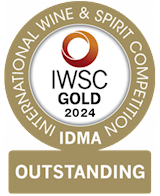
IWSC- International wine & spirit competition - Spirit Gold Outstanding
2024

IWSC- International wine & spirit competition - Spirit Gold
2020

IWSC- International wine & spirit competition - Gold outstanding
2020
BEST Teerenpeli Brewery & Distillery Spirits
AWARDS
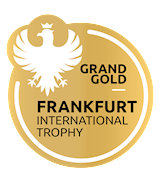
Frankfurt International Trophy - Grand Gold
2021

European Beer Star - Gold
2021
BEST Panimo Honkavuori Oy Beers
AWARDS
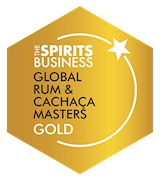
The Rum & Cachaça Masters - Gold
2023
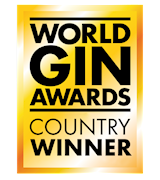
World Gin Awards - Country Winner
2022, 2020
BEST One Eyed Spirits Spirits
AWARDS

World Beer Cup - Gold
2018
BEST Laitilan Wirvoitusjuomatehdas Beers
AWARDS

World Beer Awards - Gold
2023

World Beer Awards - World’s Best No & Low Alcohol
2022
BEST The Flying Dutchman NoMad Brewing Company Beers
AWARDS

World Gin Awards - Country Winner
2021
BEST Pyynikin Distilling Company Spirits
AWARDS

Frankfurt International Trophy - Grand Gold
2021
BEST Tornion Brewery & Distillery Company Beers
Best Finnish Alcoholic Beverages
AWARDS

IWSC- International wine & spirit competition - Spirit Gold Outstanding
2024
AWARDS

IWSC- International wine & spirit competition - Spirit Gold Outstanding
2024
AWARDS

IWSC- International wine & spirit competition - Spirit Gold Outstanding
2024
Arctic Blue Gin Rose is a premium Finnish gin inspired by the beauty of Arctic summers. Crafted in Ilomantsi, Finland, it combines wild cinnamon roses, bilberries (Arctic blueberries), and pure spring water. Its natural pink hue comes from freshly pressed bilberry juice, while vacuum-distilled rose petals add floral notes.
The gin offers a fresh and vibrant aroma of wildflowers and berries, with flavors of juniper, pine, and a hint of sweetness from the bilberries. Perfect for summer spritzes or as a base in cocktails, Arctic Blue Gin Rose is a versatile and award-winning choice for gin enthusiasts.
AWARDS
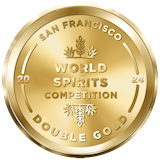
SFWSC - San Francisco World Spirits Competition - Double Gold
2024
AWARDS

European Beer Star - Gold
2022
AWARDS

IWSC- International wine & spirit competition - Gold outstanding
2020
AWARDS

IWSC- International wine & spirit competition - Gold outstanding
2020
AWARDS

European Beer Star - Gold
2021
AWARDS

World Beer Cup - Gold
2018
Carlow Cuttings Botanical Spirit is a premium Irish botanical spirit crafted with a blend of carefully selected herbs and botanicals. Produced in County Carlow, it reflects the region's natural beauty, with ingredients sourced from the local landscape.
The spirit is distilled in small batches to ensure quality and consistency in every bottle. Known for its herbal, floral, and citrus notes, it offers a vibrant and refreshing flavor profile. Carlow Cuttings is a versatile drink, perfect for sipping neat, pairing with tonic, or crafting cocktails.
AWARDS

The Irish Whiskey Masters - Master
2022
TasteAtlas food rankings are based on the ratings of the TasteAtlas audience, with a series of mechanisms that recognize real users and that ignore bot, nationalist or local patriotic ratings, and give additional value to the ratings of users that the system recognizes as knowledgeable. TasteAtlas Rankings should not be seen as the final global conclusion about food. Their purpose is to promote excellent local foods, instill pride in traditional dishes, and arouse curiosity about dishes you haven’t tried.






















































